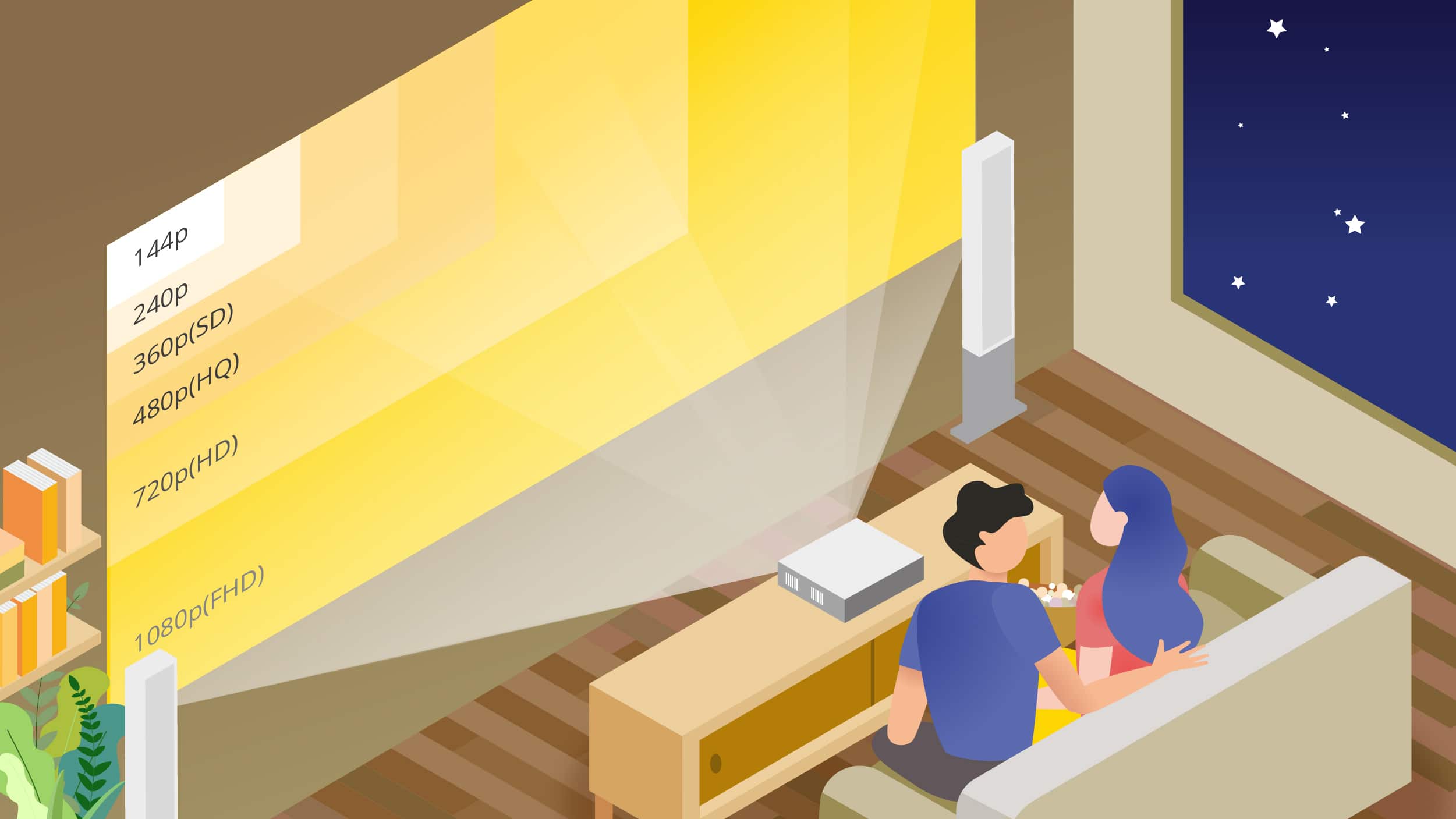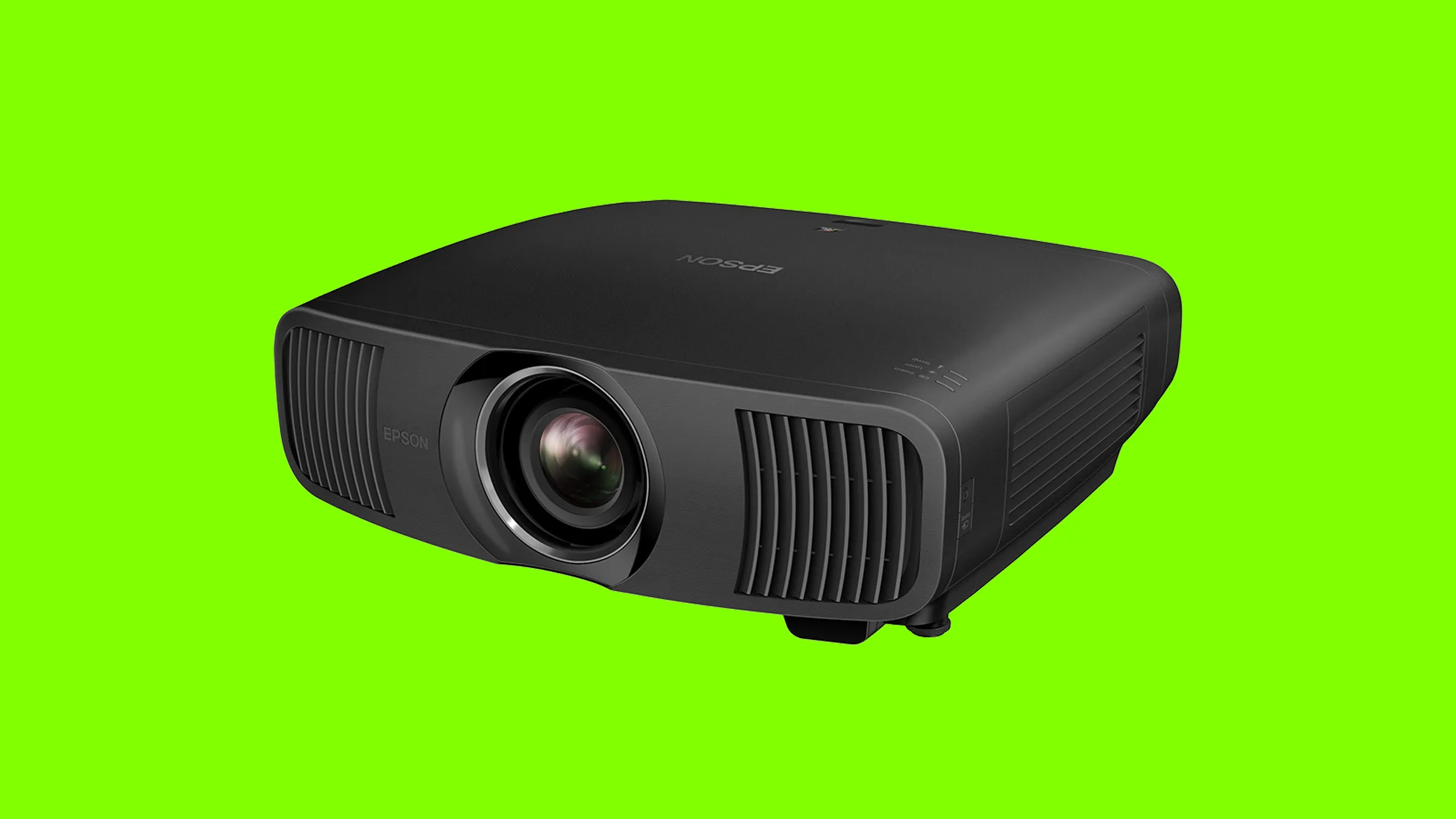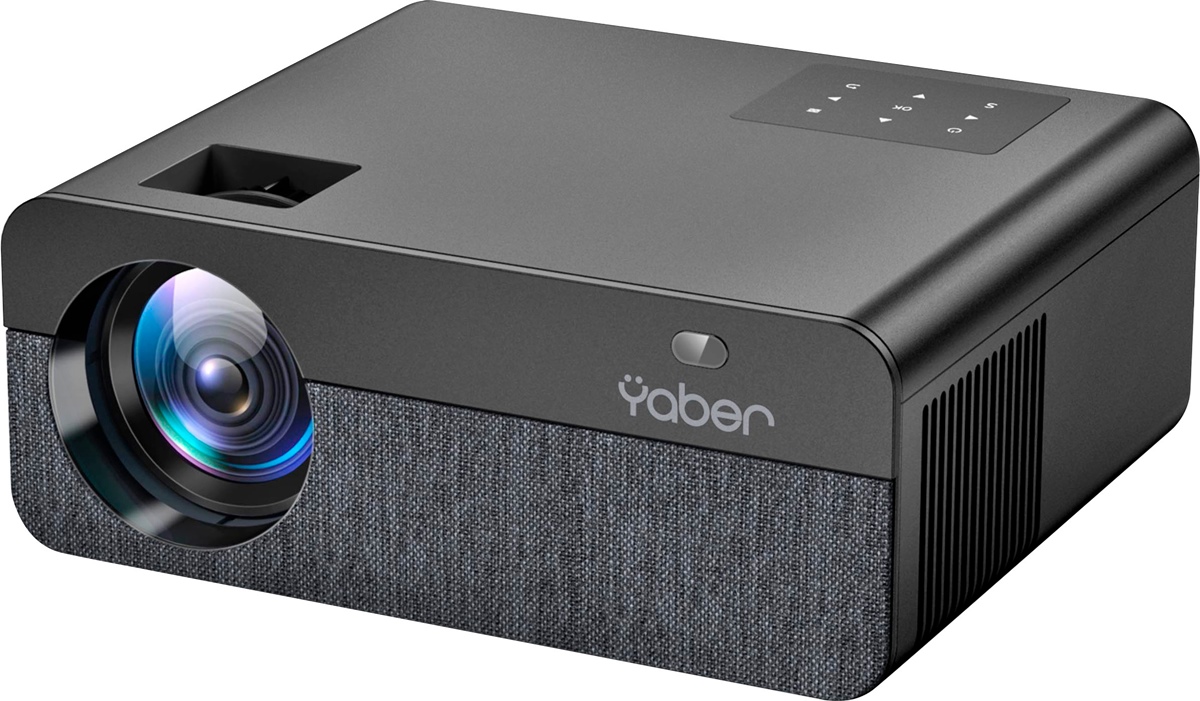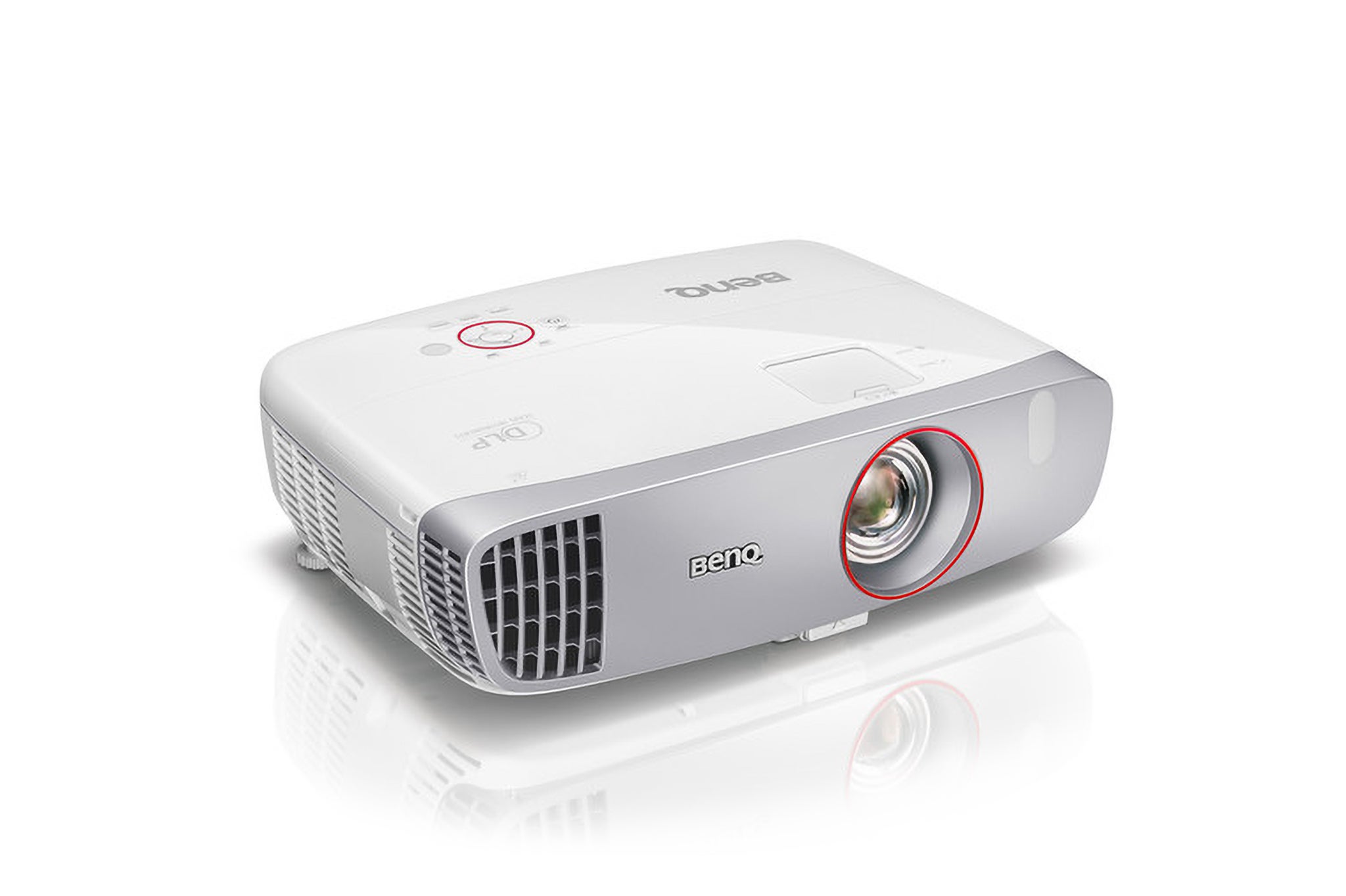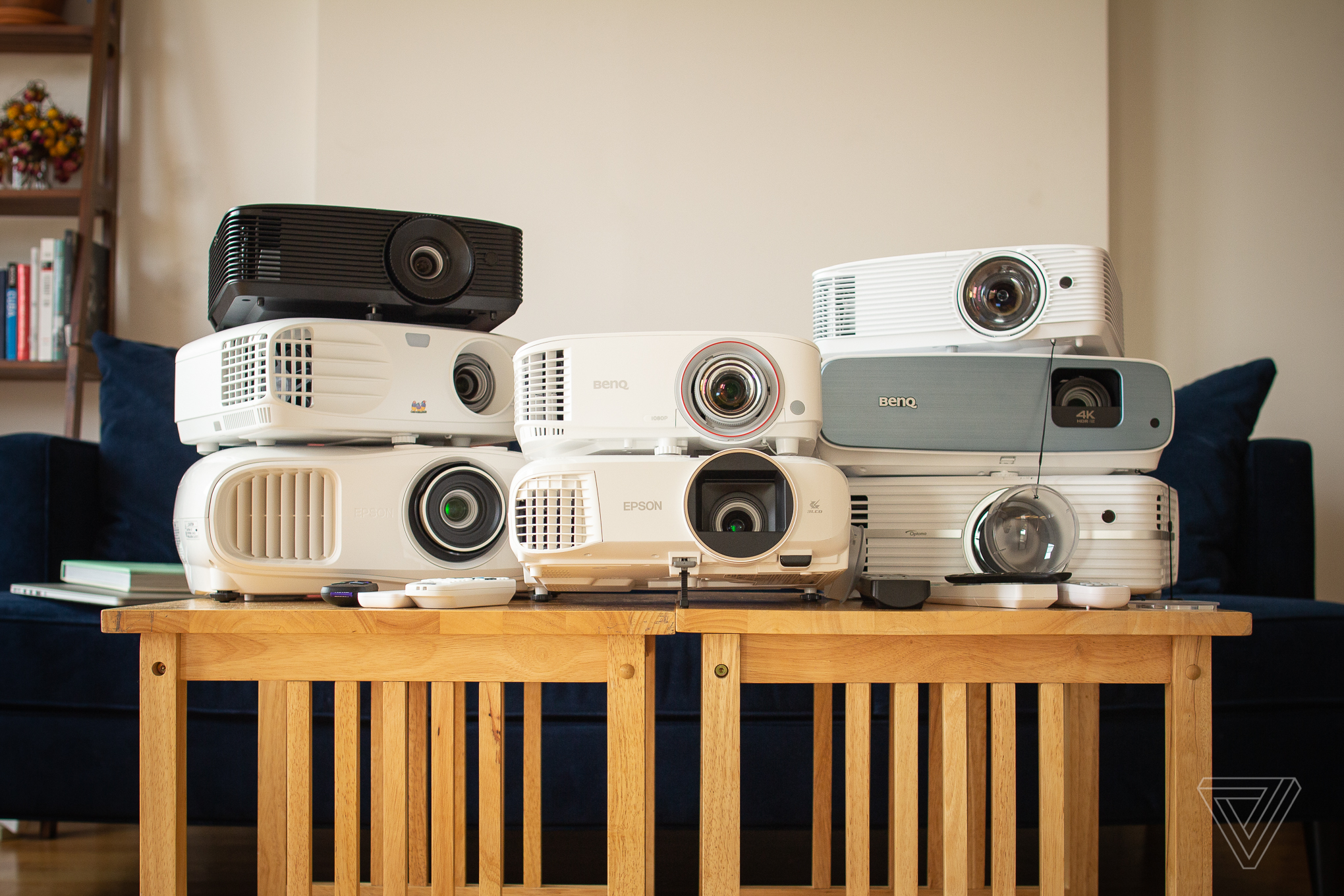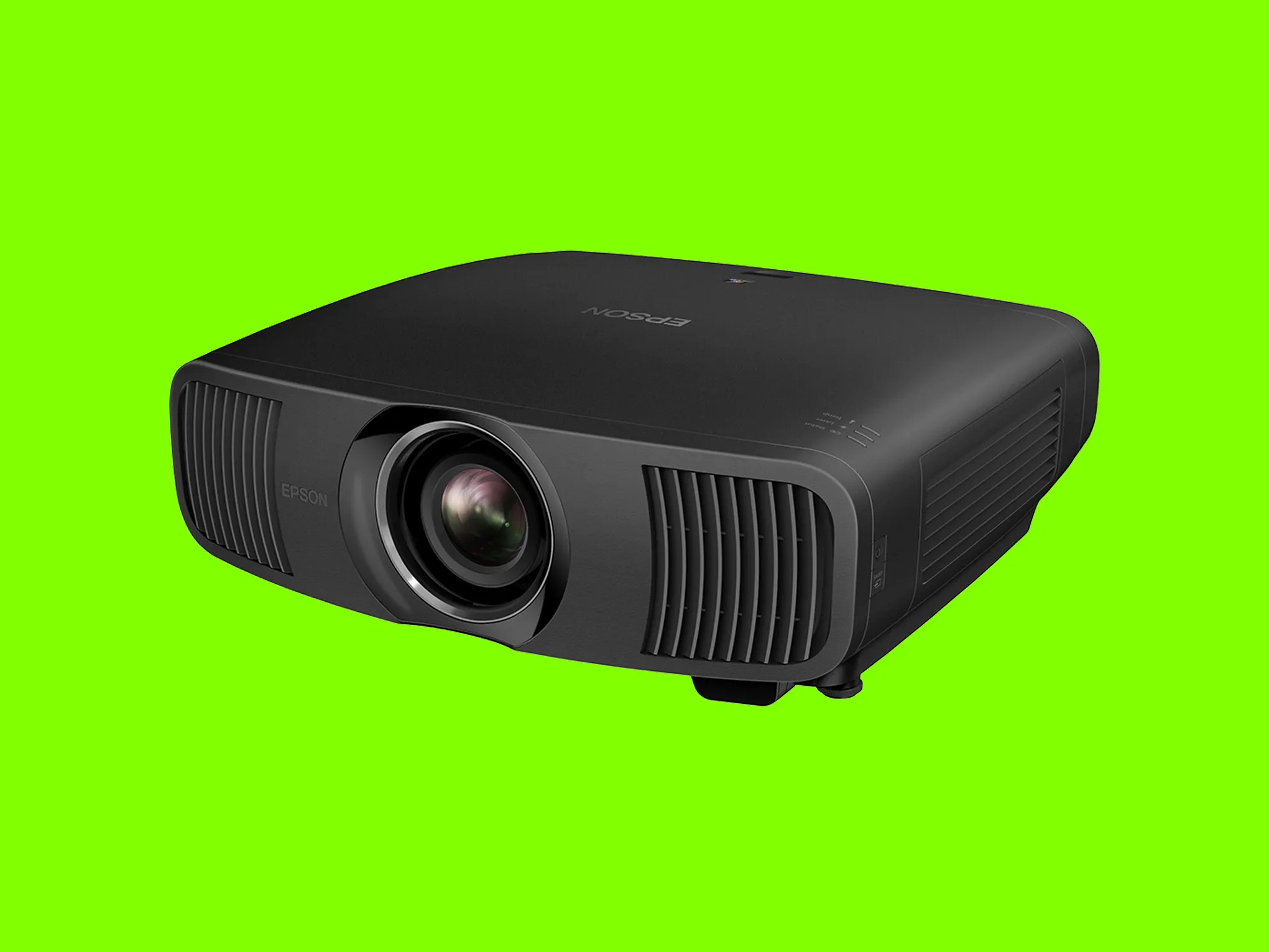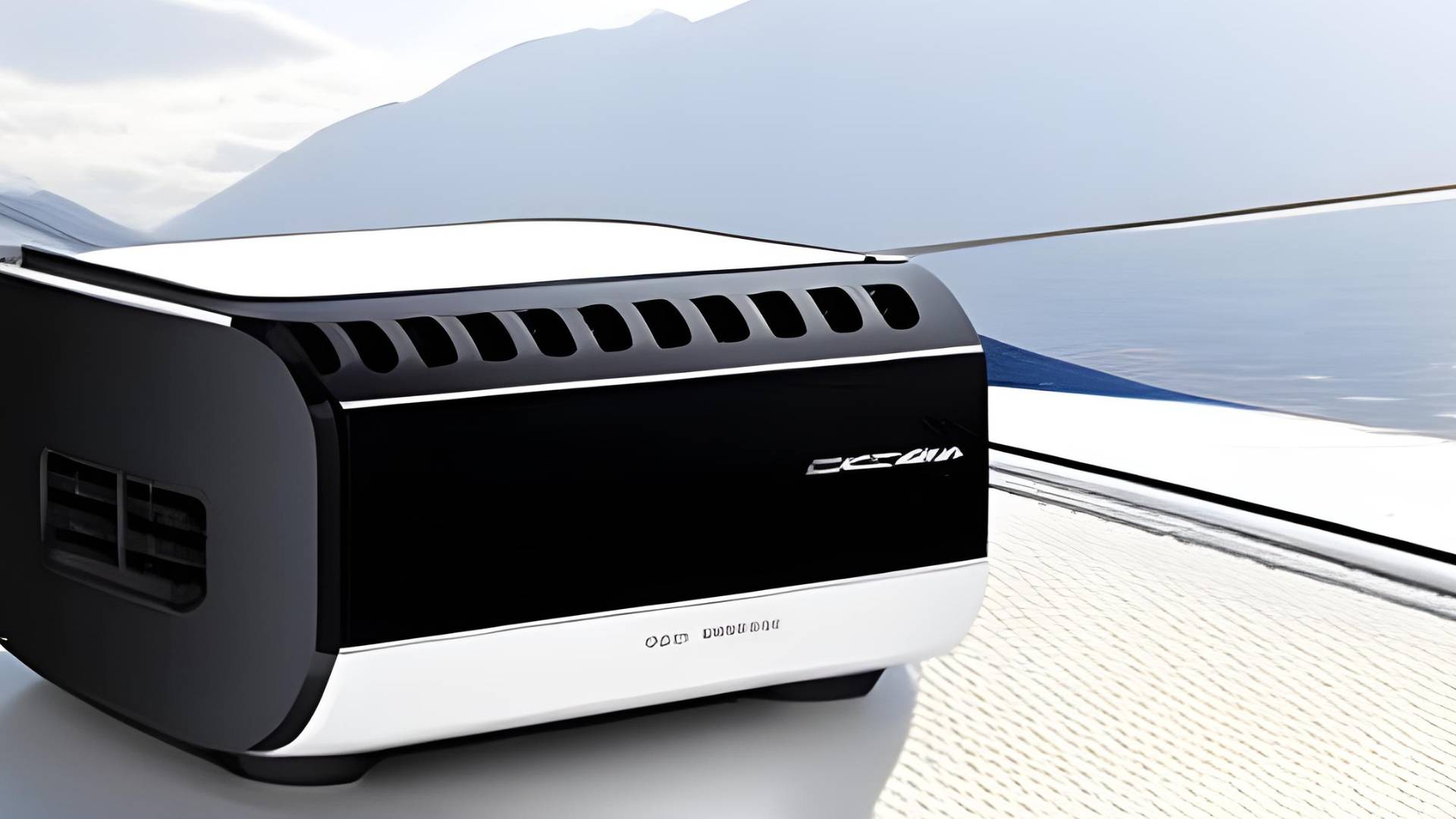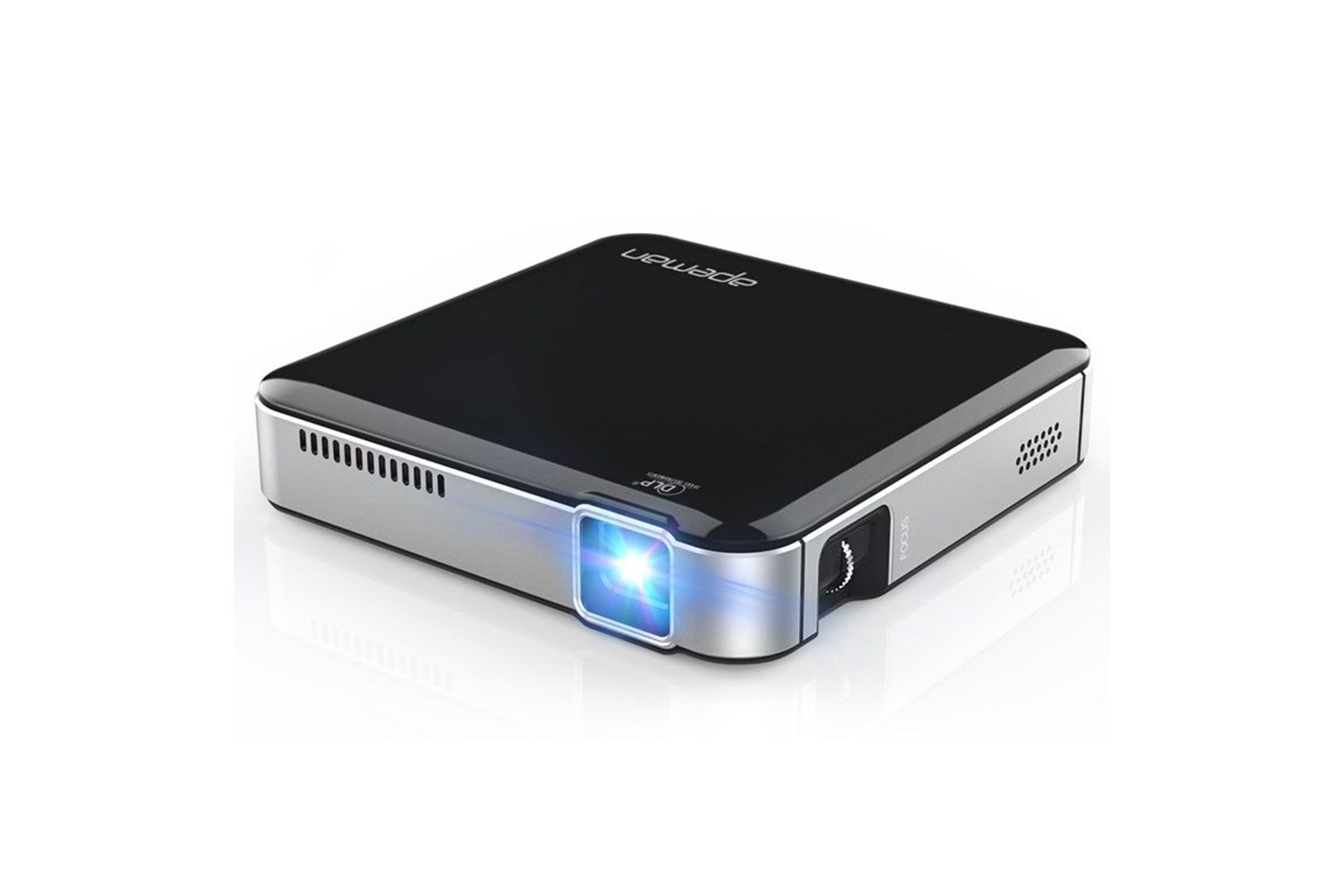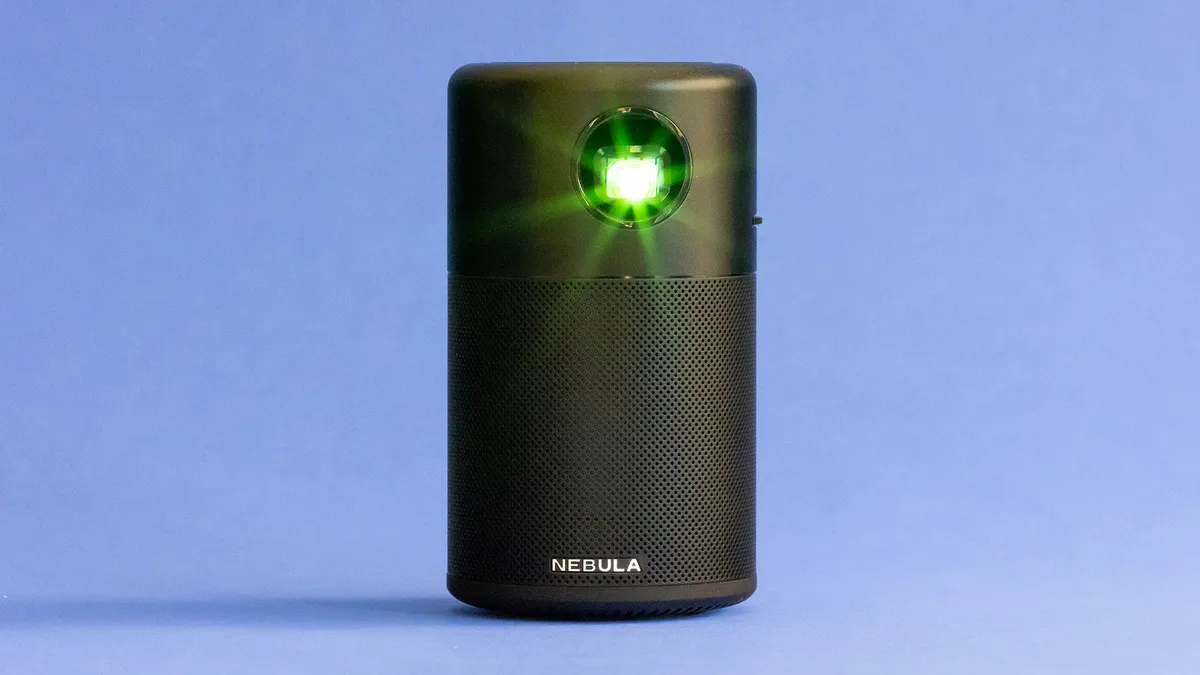Introduction
When it comes to projectors, the native resolution is a crucial factor to consider. The native resolution refers to the number of pixels displayed on the screen and determines the clarity and sharpness of the images projected. It plays a significant role in delivering a visually stunning and immersive viewing experience.
Whether you’re using a projector for business presentations, educational purposes, or home theater setups, having a good native resolution is essential. Understanding what constitutes a good native resolution and how it impacts the quality of your projections can help you make informed decisions when choosing a projector.
In this article, we will explore the benefits of having a good native resolution, explain what native resolution means, discuss factors to consider when selecting the right native resolution, and provide recommendations for different applications. By the end of this article, you’ll have a clearer understanding of how to find the ideal native resolution for your projector.
So, let’s dive in and discover why native resolution matters and how it can enhance your projection experience.
Benefits of Having a Good Native Resolution
Having a good native resolution on your projector offers a host of benefits that contribute to a superior viewing experience. Here are a few advantages of investing in a projector with a high native resolution:
- Enhanced Image Quality: A higher native resolution allows for sharper and more detailed images, bringing your content to life. Whether it’s watching movies, displaying presentations, or playing video games, a good native resolution ensures a visually satisfying experience.
- Improved Clarity: With a good native resolution, text and graphics appear sharper and easier to read. This is particularly important for business presentations, as it helps maintain professionalism and ensures that your audience can easily follow along.
- Increase in Detail: A higher native resolution reveals finer details in images, making them look more realistic and vibrant. This is especially beneficial for home theater enthusiasts who want to immerse themselves in their favorite movies or TV shows.
- Wider Viewing Angle: Projectors with higher native resolutions often offer wider viewing angles, allowing more people to enjoy the content without experiencing distortion or reduction in image quality. This is particularly advantageous in large meeting rooms or home theater setups where multiple viewers are present.
- Future-Proof Investment: Opting for a projector with a good native resolution ensures that you are prepared for future technological advancements. As content continues to evolve and becomes more high-definition, having a projector that can handle higher resolutions will ensure compatibility and longevity.
These benefits highlight the importance of investing in a projector with a good native resolution. It not only enhances the viewing experience but also future-proofs your investment, allowing you to enjoy high-quality content for years to come.
Understanding Native Resolution
To fully appreciate the significance of native resolution, it’s important to have a clear understanding of what it actually means. Native resolution refers to the number of pixels displayed on the screen by the projector. It is defined by a combination of two numbers, representing the horizontal and vertical pixels.
For instance, a common native resolution is 1920×1080, also known as Full HD or 1080p. This means that the projector displays 1920 pixels horizontally and 1080 pixels vertically, resulting in a total of 2,073,600 pixels. The higher the native resolution, the more pixels are displayed, resulting in a crisper and more detailed image.
It’s important to note that a projector’s native resolution is fixed and cannot be changed. While some projectors can accept signals with different resolutions, they will always downscale or upscale the incoming signal to match their native resolution. Therefore, it’s crucial to select the right native resolution that aligns with your specific needs.
Understanding native resolution is essential when it comes to selecting a projector, as it determines the quality and clarity of the projected image. It’s also worth mentioning that the native resolution is not the only factor influencing image quality; other aspects such as contrast ratio, brightness, and color accuracy also play significant roles.
Keep in mind that while higher native resolutions can offer more detailed images, they may require higher-quality content to fully utilize their potential. If you frequently use lower-resolution content, opting for a lower native resolution projector may provide a more cost-effective solution without sacrificing too much image quality.
Now that we have a clear understanding of what native resolution entails, let’s explore the factors to consider when choosing the right native resolution for your projector.
Factors to Consider When Choosing a Native Resolution
When selecting the native resolution for your projector, several factors should be taken into account to ensure the best possible viewing experience. Here are some key factors to consider:
- Content Type: Consider the type of content you will be projecting most frequently. If you primarily use high-definition movies or graphics-intensive presentations, a higher native resolution, such as 1080p or 4K, will provide excellent image quality. However, if your content consists mainly of standard definition videos or text-based presentations, a lower native resolution may suffice.
- Viewing Distance: Determine the distance between the projector and the screen or projection surface. If you have limited space and need to sit relatively close to the screen, a higher native resolution will be beneficial to avoid pixelation and maintain image sharpness. For larger viewing distances, a lower native resolution may still provide satisfactory results and can be a more cost-effective option.
- Budget: Consider your budget when choosing the native resolution for your projector. Higher native resolutions, such as 4K, tend to be more expensive. Determine the maximum resolution you need based on your viewing requirements and allocate your budget accordingly.
- Room Lighting: Take into account the ambient lighting conditions in the room where the projector will be used. If you have a dedicated darkened room, a higher native resolution will help deliver more vibrant and detailed images. However, if the room is brightly lit or has large windows, a lower native resolution projector may perform better in maintaining image visibility and contrast.
- Compatibility: Ensure that the native resolution you choose is compatible with the video sources you plan to use. For example, if you frequently watch Blu-ray movies, a 1080p native resolution is ideal, as it matches the resolution of Blu-ray discs. Make sure your video sources can output content in the native resolution of your projector to avoid potential compatibility issues.
By considering these factors, you can make an informed decision when choosing the native resolution for your projector. Keep in mind that striking the right balance between image quality, budget, and specific viewing needs will ultimately result in a satisfying projection experience.
Common Native Resolutions for Projectors
Projectors come in a variety of native resolutions, each offering distinct advantages depending on your specific needs. Here are some commonly used native resolutions for projectors:
- 800×600 (SVGA): SVGA resolution is the most basic native resolution found in entry-level projectors. While it may not offer the highest level of image detail, it is suitable for displaying basic presentations and videos.
- 1024×768 (XGA): XGA resolution is commonly used in business and education settings. It provides a higher level of clarity and detail, making it ideal for presentations, spreadsheets, and other text-heavy content.
- 1280×800 (WXGA): WXGA resolution is popular for widescreen displays and is commonly used in both business and home theater projectors. It offers better image quality and is well-suited for displaying widescreen content, such as movies and presentations.
- 1920×1080 (Full HD or 1080p): Full HD is currently the most popular native resolution for projectors. It delivers excellent image quality with rich detail and vibrant colors. It is perfect for home theater setups, gaming, and professional presentations that require high-definition visuals.
- 3840×2160 (4K UHD): 4K UHD resolution provides the highest level of detail and clarity available in projectors. It delivers stunning visuals with four times the resolution of Full HD. While 4K projectors are typically more expensive, they offer an unparalleled viewing experience, particularly for home theater enthusiasts and those seeking the utmost image quality.
These are just a few examples of common native resolutions for projectors. There are other resolutions available depending on the specific requirements of your application. Remember to consider factors such as content type, viewing distance, and budget when selecting the native resolution for your projector.
Now that we’ve explored the common native resolutions, let’s move on to discussing the recommended native resolutions for different applications.
Recommended Native Resolution for Different Applications
The recommended native resolution for your projector may vary depending on the specific application or use case. Here are some general recommendations for different applications:
- Business Presentations: For standard business presentations, such as slideshows and text-heavy content, a native resolution of XGA (1024×768) or WXGA (1280×800) is typically sufficient. These resolutions offer good image quality and readability of text, ensuring that your presentations are clear and professional.
- Home Theater: If you’re building a home theater setup and want to enjoy movies, TV shows, and gaming with immersive visuals, a native resolution of Full HD (1920×1080) or even 4K UHD (3840×2160) is recommended. These resolutions provide the level of detail and clarity needed for a cinematic experience, allowing you to fully appreciate the visual elements of your favorite content.
- Educational Settings: Educational institutions often require projectors that can handle various types of content, including text, images, and videos. WXGA resolution (1280×800) is a popular choice as it strikes a balance between cost, image quality, and compatibility. It offers a widescreen format that can showcase presentations, graphs, and lesson materials effectively.
- Gaming: Gamers often prioritize smooth gameplay and exceptional visual quality. For gaming enthusiasts, a native resolution of at least Full HD (1920×1080) is recommended. This resolution offers crisp visuals and allows for an immersive gaming experience, especially when combined with high refresh rates and low input lag.
- Outdoor Events: When hosting outdoor events or movie nights, ambient lighting and distance become important factors. In such scenarios, a native resolution of WXGA (1280×800) or Full HD (1920×1080) can provide a good balance between image quality and affordability, ensuring a clear and enjoyable viewing experience even in outdoor environments.
These recommended native resolutions serve as general guidelines, but it’s important to consider factors such as budget, viewing distance, and specific requirements of your application. Remember to choose a native resolution that suits your needs and provides an optimal viewing experience for your intended use.
With these recommendations in mind, you can now make an informed decision on the native resolution that is best suited for your specific application.
Finding the Right Native Resolution for Your Projector
Choosing the right native resolution for your projector is crucial in achieving the desired image quality and overall viewing experience. Here are some steps you can follow to find the perfect native resolution for your projector:
- Understand your requirements: Determine your specific needs and the purpose of your projector. Consider the type of content you will predominantly display and the viewing distance from the screen or projection surface.
- Research and compare: Research different native resolutions available in the market and compare their pros and cons. Look for projectors that offer the native resolution you are considering and read reviews to understand their performance and image quality.
- Consider your budget: Take your budget into account when narrowing down your options. Higher native resolutions, such as 4K UHD, tend to be costlier. Determine the maximum resolution that aligns with both your requirements and budget.
- Test and evaluate: If possible, test projectors with different native resolutions in person. This will allow you to see the image quality firsthand and determine which resolution meets your expectations. Pay attention to factors such as clarity, sharpness, color accuracy, and overall visual experience.
- Consult with experts: Seek advice from professionals or experts in the field of projectors. They can provide valuable insights and recommendations based on your specific needs and help you make an informed decision.
- Consider future-proofing: Keep in mind the future trends in content and technology. Consider whether higher native resolutions will become more prevalent in the coming years and if investing in a higher resolution projector will provide longevity and future compatibility.
By following these steps, you can narrow down your options and find the right native resolution for your projector that aligns with your requirements, budget, and future needs. Remember, selecting the optimal native resolution plays a vital role in delivering an exceptional projection experience.
Conclusion
Choosing the right native resolution for your projector is crucial in delivering a visually stunning and immersive viewing experience. A good native resolution enhances image quality, provides sharpness, and reveals finer details in your content. By understanding your specific needs, considering factors such as content type, viewing distance, room lighting, and budget, you can make an informed decision when selecting the native resolution for your projector.
Common native resolutions for projectors include SVGA, XGA, WXGA, Full HD, and 4K UHD, each offering different levels of detail and clarity. Recommendations for specific applications, such as business presentations, home theater, education, gaming, and outdoor events, can help guide you towards the ideal native resolution for your intended use.
When finding the right native resolution, it’s important to research, compare, and test projectors to ensure they meet your expectations in terms of image quality and overall performance. Consulting with experts in the field can also provide valuable insights and guidance.
Ultimately, selecting the optimal native resolution depends on your requirements, budget, and future-proofing considerations. By carefully considering these factors, you can make a well-informed decision and enjoy a superior projection experience that brings your content to life.







